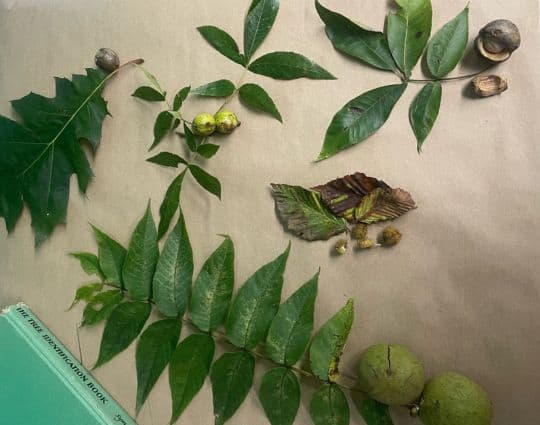After days of rain, the sky was finally blue this morning as I walked the trail at Sheldrake. Early fall is an excellent time of the year to brush up on tree identification skills. We can look at the bark, the leaves, and also the fruit or nut to give us clues as to what tree we’re looking at. Today, the trail was carpeted with (mostly opened and eaten) hickory nuts, walnuts, and some beechnuts and acorns. Interestingly, last year, at this time, there were almost no nuts to be found. What gives? Well, I think we might be having a mast year!
What’s a mast year? Mast is a broad term that refers to the various nuts and fruits produced by woody plants, and during a mast year, an overabundance of these nuts and fruits are produced. Hard mast are nuts, and soft mast are fleshy fruits. The mast at Sheldrake includes black walnuts, hickory nuts, beechnuts, acorns, and even maple samaras. Forest mast is the primary fall and winter food for many wildlife species, including white-tailed deer, turkeys, squirrels, chipmunks, and groundhogs.
In addition to providing food for so many woodland creatures, the mast has the important role of being a seed and producing the next Walnut, Hickory, Beech, Oak, or Maple tree. Mast years make new trees possible. In a typical year, most of the mast gets eaten by the animals, but in mast years the trees produce an overabundance of mast so that there’s more than enough for all the woodland creatures to eat and store and still have some left over to grow into new trees!
Interestingly, a mast year is an interspecies phenomenon. There is coordination between many different tree species, which amplifies the mast-year effect. Mast years happen irregularly, usually every 2-5 years.
How does a mast year affect next spring? I expect to see an uptick in the number of mast-dependent animals that make it through the winter. I’ll be looking for more chipmunks, squirrels, and even groundhogs around Sheldrake. I can practically hear them scampering now!

